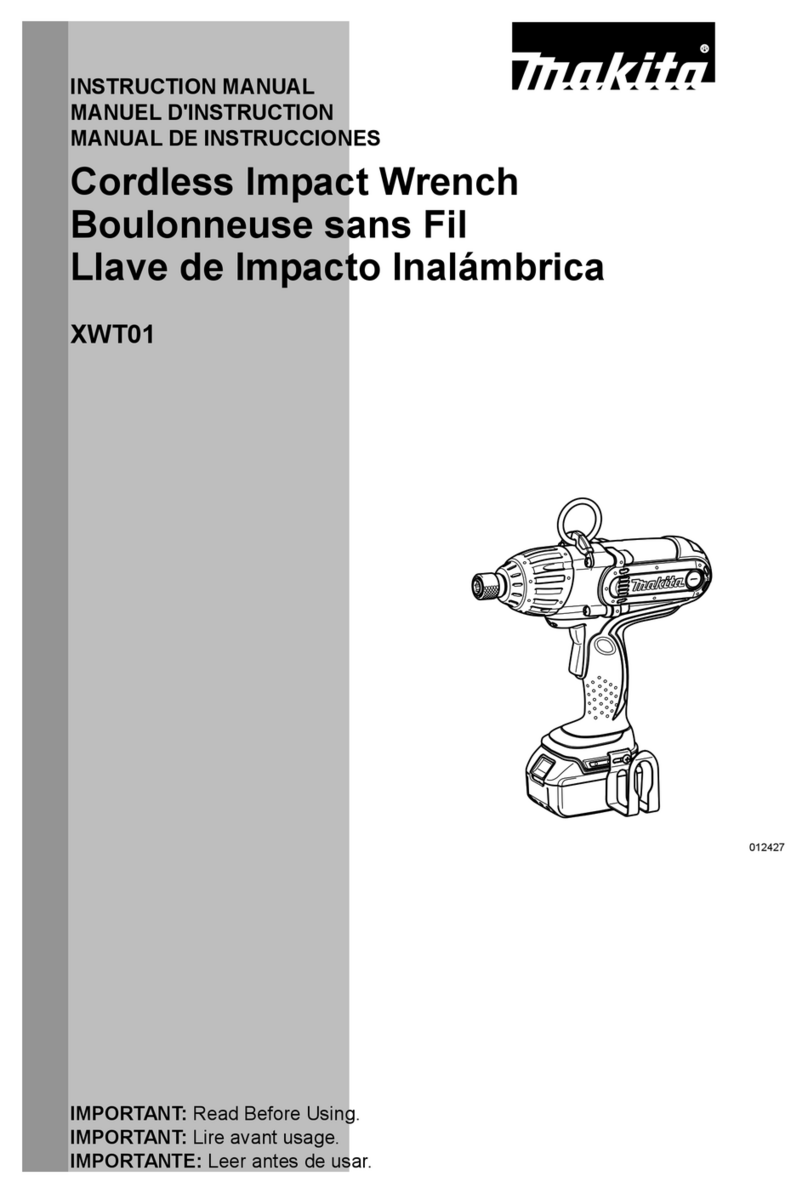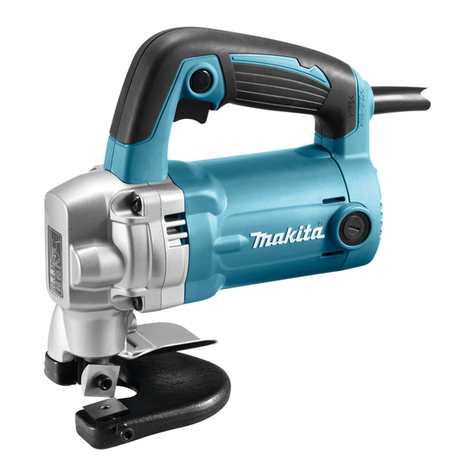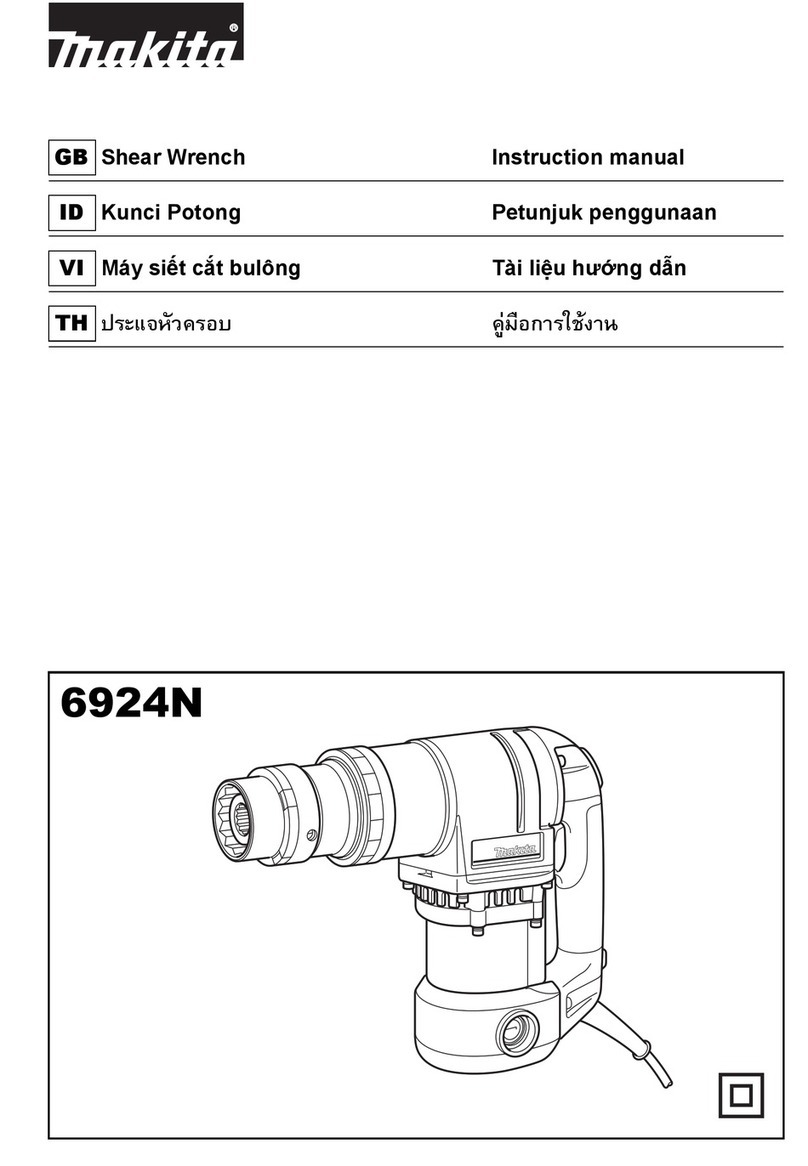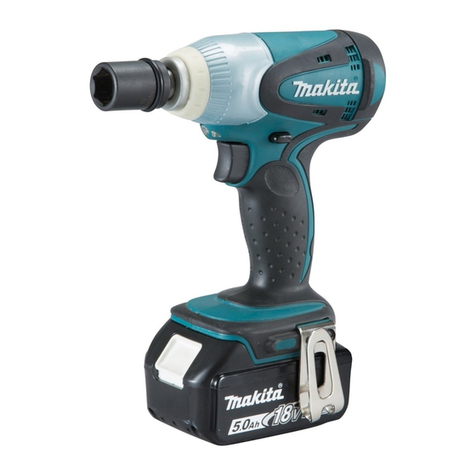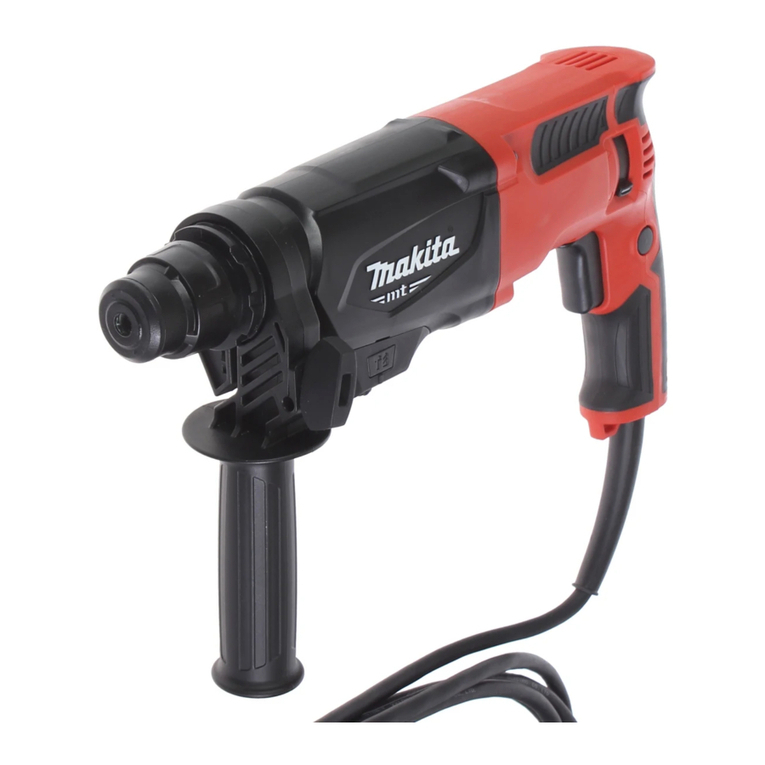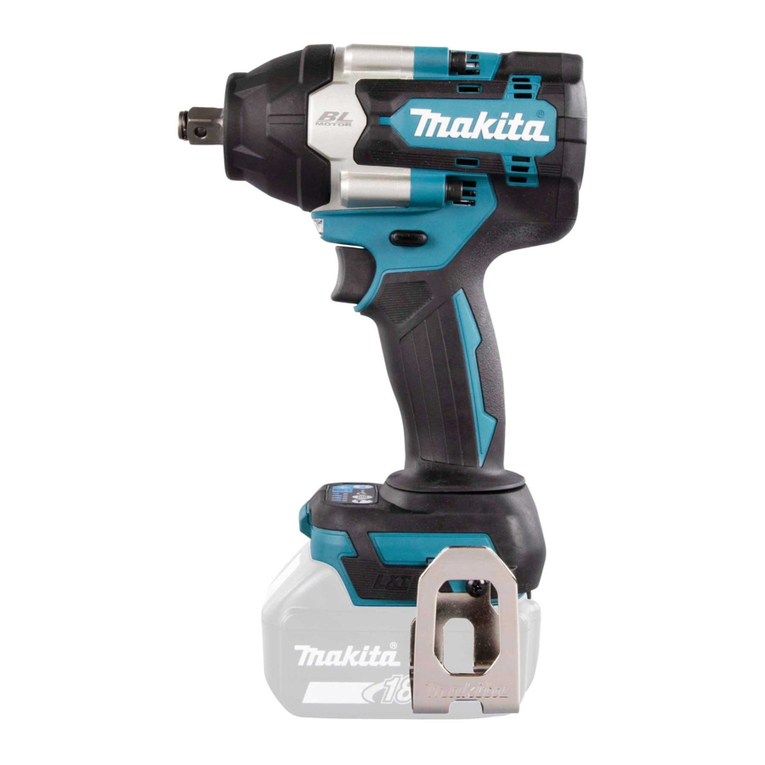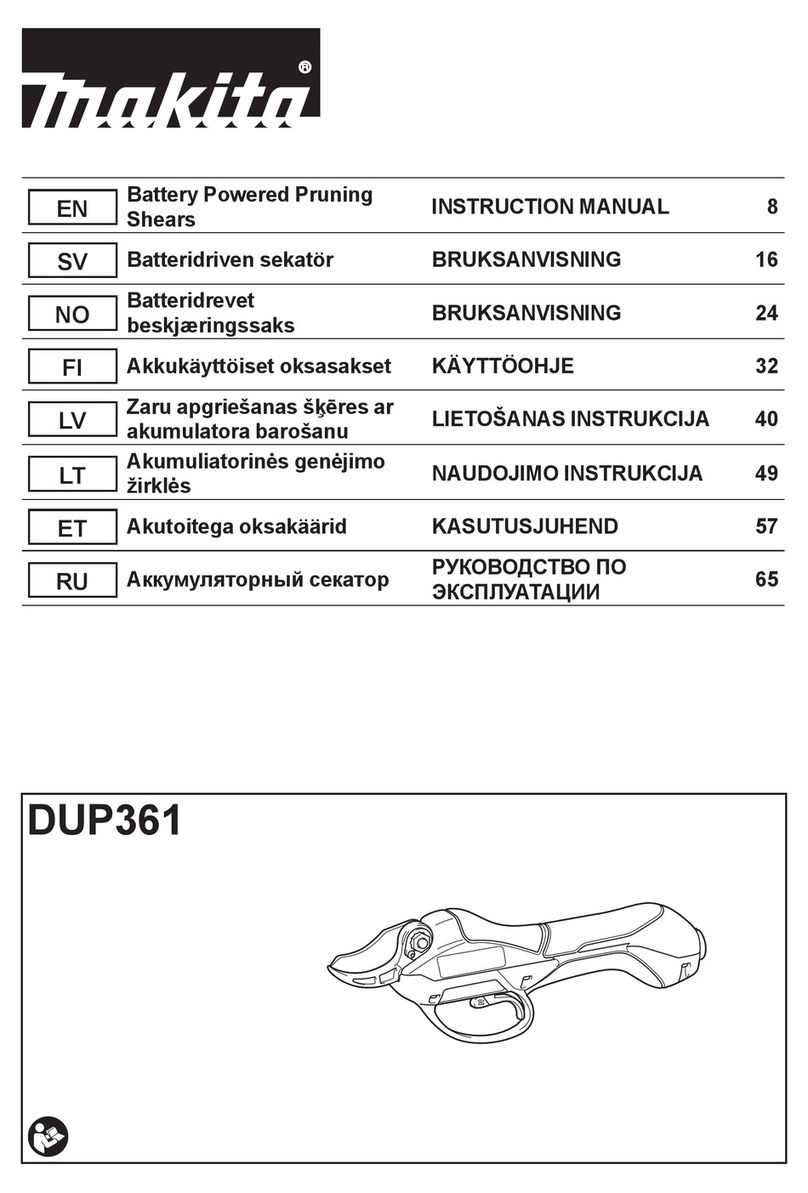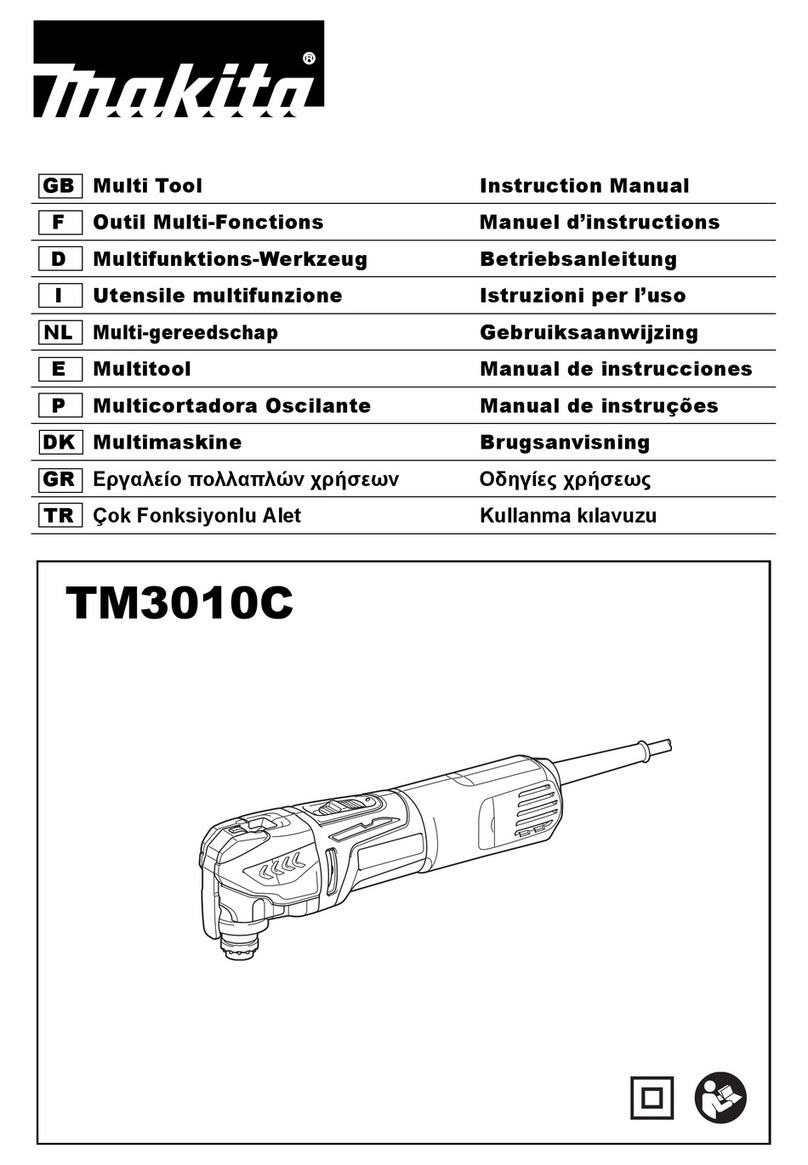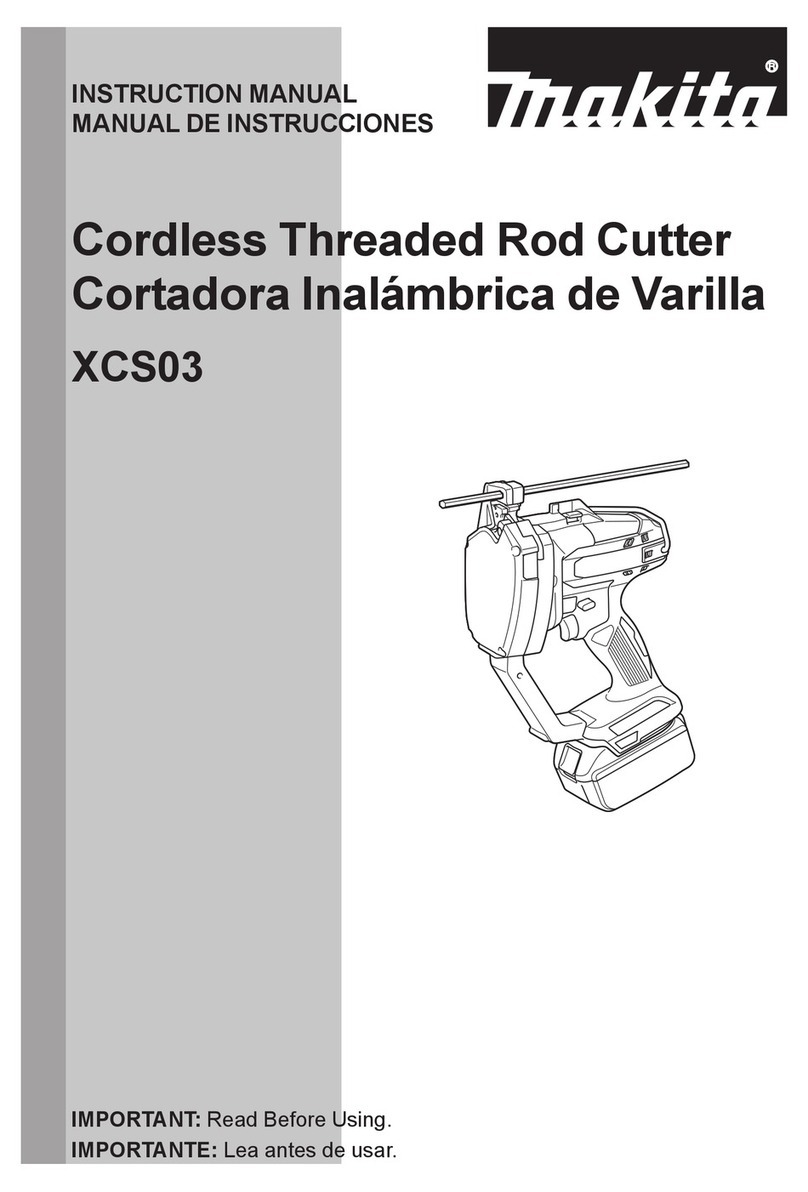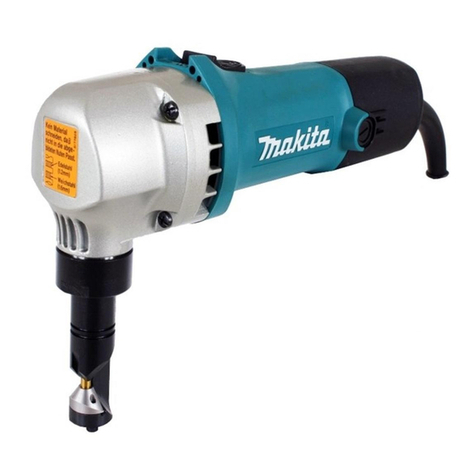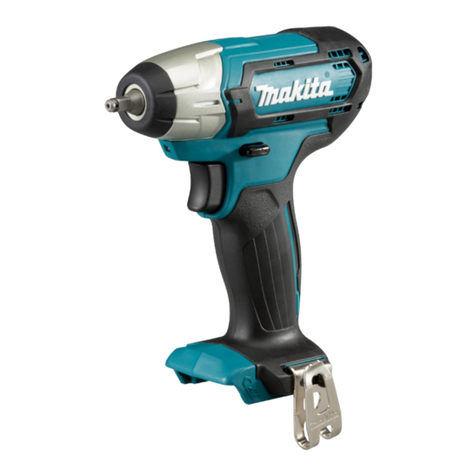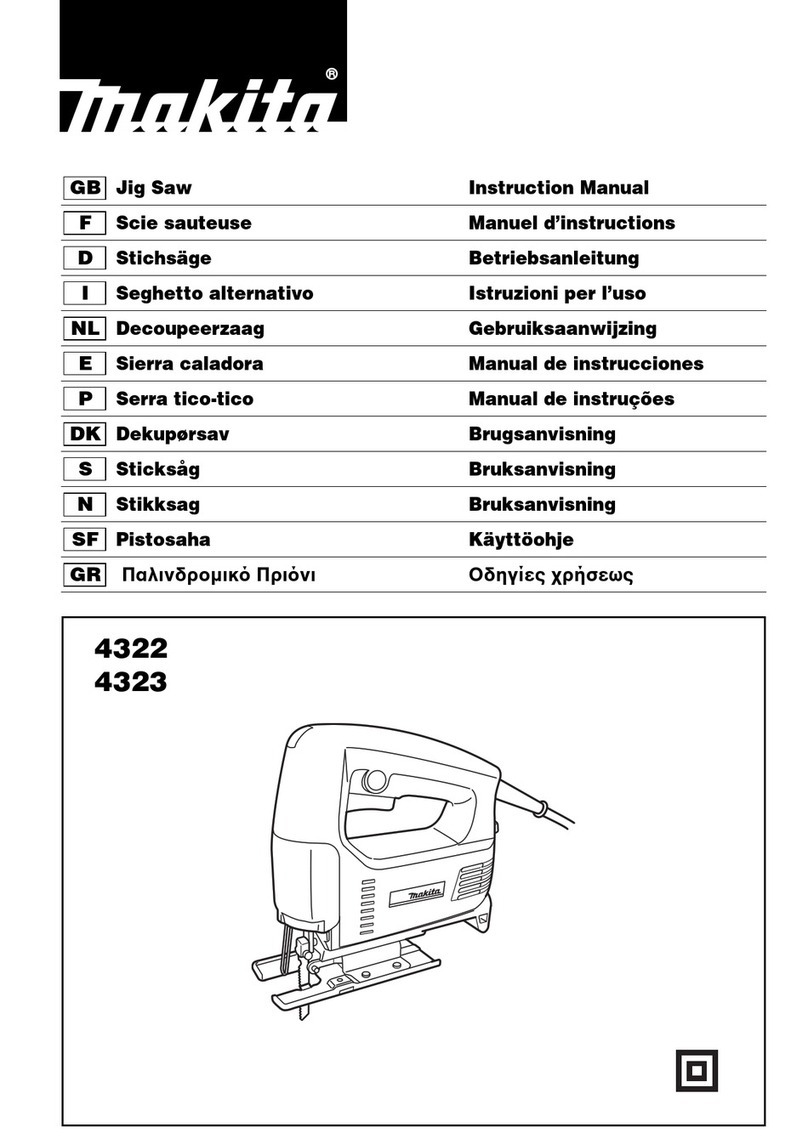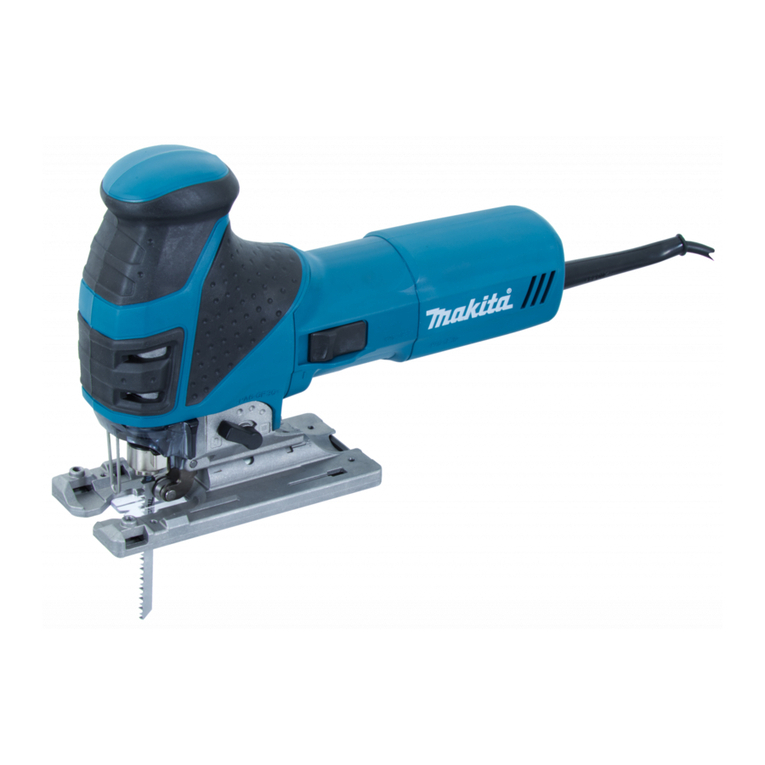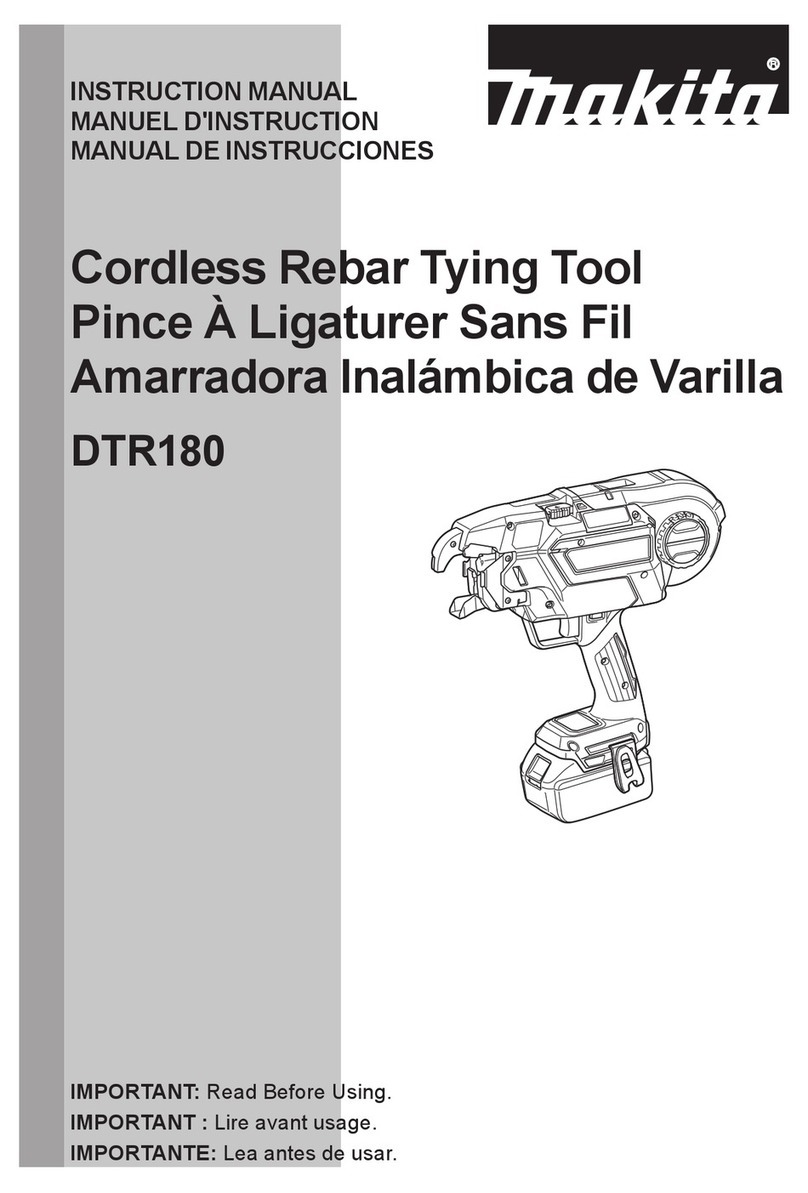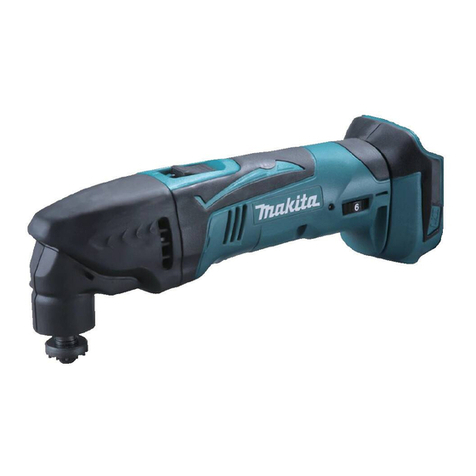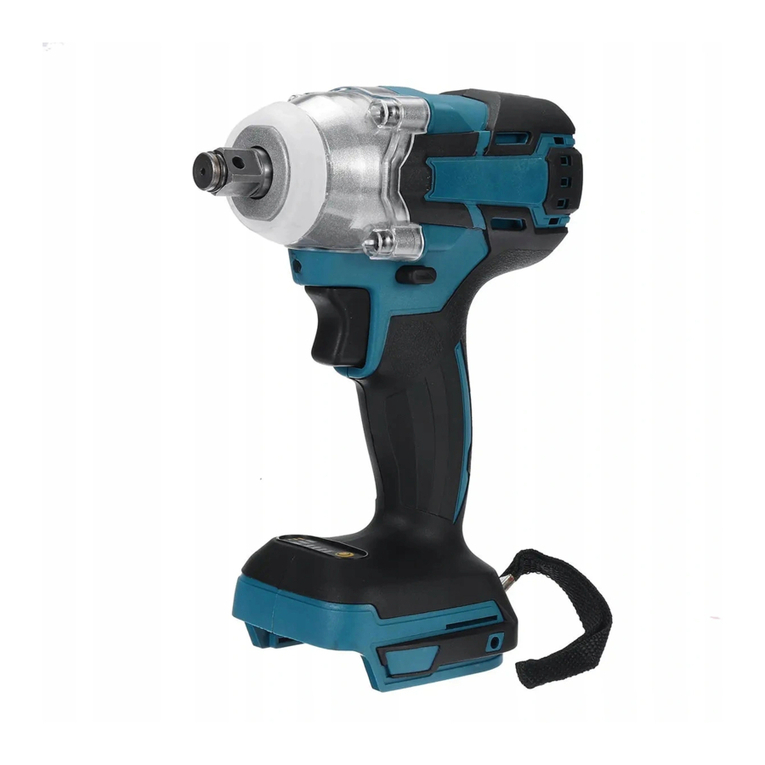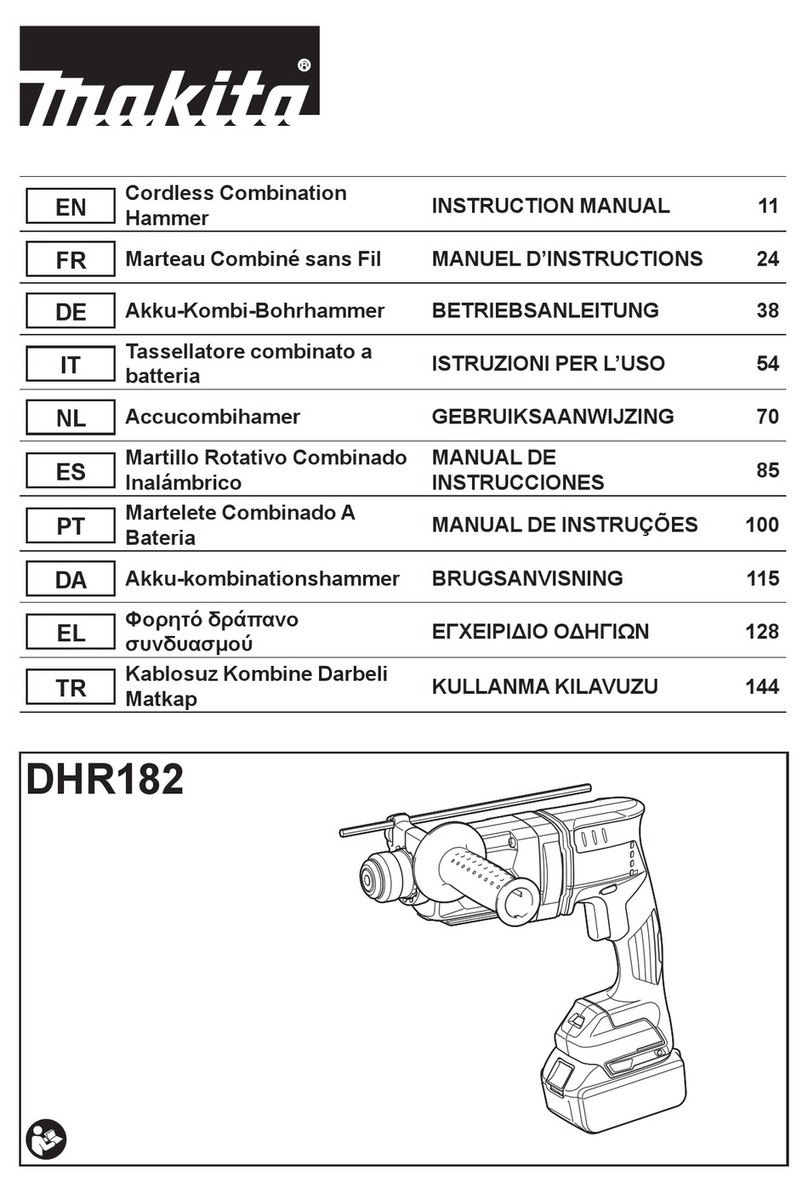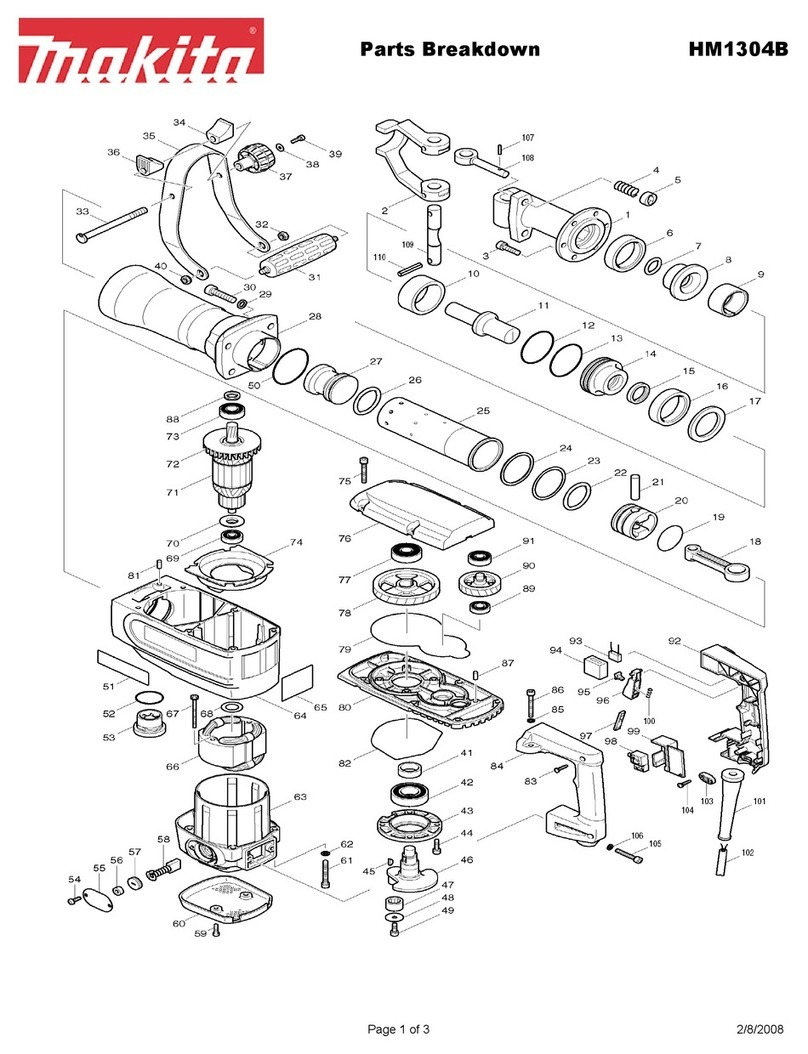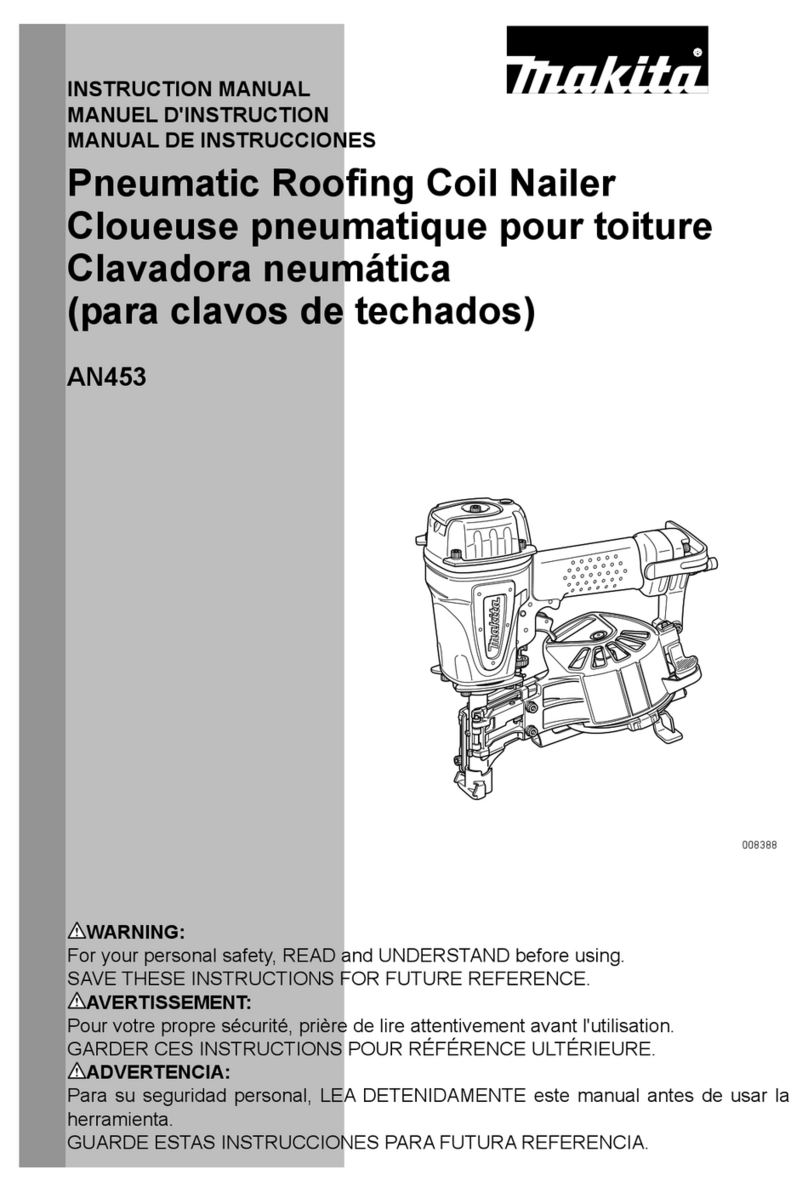
6ENGLISH
WARNING:Thevibrationemissionduringactual
useofthepowertoolcandifferfromthedeclared
emission value depending on the ways in which the
tool is used.
WARNING:Besuretoidentifysafetymeasures
to protect the operator that are based on an estima-
tionofexposureintheactualconditionsofuse(taking
accountofallpartsoftheoperatingcyclesuchas
thetimeswhenthetoolisswitchedoffandwhenitis
running idle in addition to the trigger time).
EC Declaration of Conformity
For European countries only
TheECdeclarationofconformityisincludedasAnnexA
to this instruction manual.
SAFETY WARNINGS
General power tool safety warnings
WARNING: Read all safety warnings, instruc-
tions, illustrations and specications provided
with this power tool.Failuretofollowallinstructions
listedbelowmayresultinelectricshock,reand/or
seriousinjury.
Save all warnings and instruc-
tions for future reference.
Theterm"powertool"inthewarningsreferstoyour
mains-operated (corded) power tool or battery-operated
(cordless) power tool.
Cordless nailer safety warnings
1. Always assume that the tool contains fasten-
ers.Carelesshandlingofthenailercanresultin
unexpectedringoffastenersandpersonalinjury.
2. Do not point the tool towards yourself or any-
one nearby. Unexpected triggering will discharge
thefastenercausinganinjury.
3. Do not actuate the tool unless the tool is
placed rmly against the workpiece.Ifthetool
isnotincontactwiththeworkpiece,thefastener
maybedeectedawayfromyourtarget.
4. Disconnect the tool from the power source
when the fastener jams in the tool. While
removingajammedfastener,thenailermaybe
accidentallyactivatedifitispluggedin.
5. Use caution while removing a jammed fas-
tener.Themechanismmaybeundercompression
andthefastenermaybeforcefullydischarged
whileattemptingtofreeajammedcondition.
6. Do not use this nailer for fastening electrical
cables. Itisnotdesignedforelectriccableinstal-
lationandmaydamagetheinsulationofelectric
cablestherebycausingelectricshockorre
hazards.
7. Always wear safety glasses to protect your
eyes from dust or fastener injury.
8. Keep hands and feet away from the ejection
port area.
9. Follow instruction for lubricating and chang-
ing accessories.
10. Always remove the battery cartridge before
loading the fasteners, adjustment, inspection,
maintenance or after operation is over.
11. Make sure no one is nearby before operation.
Never attempt to drive fasteners from both the
inside and outside of wall at the same time.
Fasteners may rip through and/or y off, pre-
senting a grave danger.
12. Watch your footing and maintain your balance
with the tool. Make sure there is no one below
when working in high locations.
13. Never use fastener driving tools marked with
the symbol "Do not use on scaffoldings, lad-
ders" for specic application for example:
• whenchangingonedrivinglocationto
anotherinvolvestheuseofscaffoldings,
stairs,ladders,orladderalikeconstructions,
e.g.rooflaths;
• closingboxesorcrates;
• ttingtransportationsafetysystemse.g.on
vehicles and wagons.
14. Check walls, ceilings, oors, roong and
the like carefully to avoid possible electrical
shock, gas leakage, explosions, etc. caused by
stapling into live wires, conduits or gas pipes.
15. Use only fasteners specied in this manual.
The use of any other fasteners may cause
malfunction of the tool.
16. Do not tamper with the tool or attempt to use it
for other than driving fasteners.
17. Do not operate the tool without fasteners. It
shortens the service life of the tool.
18. Stop driving operations immediately if you
notice something wrong or out of the ordinary
with the tool.
19. Never fasten into any materials which may
allow the fastener to puncture and y through
as a projectile.
20. Never actuate the switch trigger and contact
element at the same time until you are pre-
pared to fasten workpieces. Allow the work-
piece to depress the contact element. Never
defeat its purpose by securing the contact
element back or by depressing it by hand.
21. Never tamper with the contact element. Check
the contact element frequently for proper
operations.
22. Always remove fasteners from the tool when
not in use.
SAVE THESE INSTRUCTIONS.
WARNING: DO NOT let comfort or familiarity
with product (gained from repeated use) replace
strict adherence to safety rules for the subject
product. MISUSE or failure to follow the safety
rules stated in this instruction manual may cause
serious personal injury.
